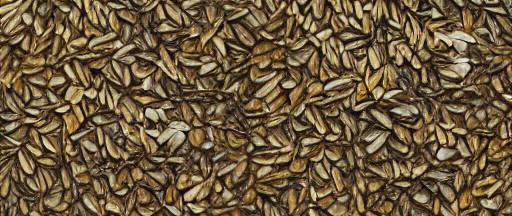Planting Grass Seed
When is the best time to plant grass seed?
Kentucky Bluegrass, fine fescue, and rye grass are considered cool season grasses. They really want cool and moist temperatures to thrive, so the best time to plant them is early spring or fall.Bermuda grass and zoysia are considered warm season grasses. They prefer warm and dry, so spring and summer are the best times to plant those.

There's nothing like a freshly cut lawn.
Preparing the Soil
Soil prep is highly important, because it's much easier to deal with weeds before you've planted than it is after the lawn is established. You don't want to waste your time and effort on a new lawn, only to end up with a massive weed infestation.
To prepare your soil, remove all the existing plant life. Get rid of all the weeds and grasses that are currently growing. Getting rid of weeds makes perfect sense, but why get rid of any grass that has already grown? If it's the type of grass you want, then you're all set. However, there are many types of invasive grasses that look harmless, but really mess up your lawn later. Clumping grasses like tall fescue can break up an otherwise nice, even lawn. These invasive grasses are notoriously difficult to remove without harming your good grass. Removing any unwanted species before you plant new grass is a must.
Now it's time to break up the soil. Till the ground about 6 inches down. This loosens up the dirt, making it easier for new roots to be established. Once you've tilled, smooth out the dirt surface and then water the dirt.
If you've got really rocky soil, you may want to consider adding a few inches of topsoil to your existing dirt.
Adjusting Your Soil's PH Level
Now if you really want to be thorough, you can check your soil's PH level. That might sound a bit fanatical, but if you've had problems with growing in the past, this might be just the thing you need. It's not as complex as it sounds either. Home Depot and Lowes sell digital soil PH testers for $15-20.
Most grass prefers a PH between 6 and 7. If your soil is lower than 6, you can spread lime (crushed limestone, not the citrus fruit). The calcium and magnesium found in limestone neutralize acidity, raising your PH. If your soil is above 7, you can spread some sulfur. Once the water mixes with the sulfur, it creates sulfuric acid, lowering your PH.
Spreading the Seed
There are seed broadcasters on wheels, hand broadcasters, and the manual method. If you're working with a large area, you'll probably want a wheeled spreader. They also have handy little blockers you can put on the side that help you limit where the seed flies. This is great near sidewalks and driveways. (This can also be used for fertilizer later on.) I personally prefer the hand method for the average yard. It gives you better control over how much seed you lay down. It is slower, but sometimes if you want something done right, you've gotta do it yourself.
Seed isn't dirt cheap, but it's not as expensive as sod either. Be generous as you lay it down, because a good thick turf can prevent weeds from growing up later. Best to establish it thick right from the get-go.
Once your seed is down, you'll want to protect it from the elements. Wind and harsh sunlight can mess up the whole operation if you're not prepared.
Some people prefer to use the natural resources they already have laying around, like leaves and grass clippings. This is effective, but risky. What seeds are in the grass? Did anything else blow into your pile of leaves? Probably. If you want to maintain the purity of your grass seed, these are probably not the best options.
A commonly used seed cover is peat moss. It's quick and easy to throw down a few bags of peat moss over a wide area. It can, theoretically change the soil's PH if you use it regularly, but using it once for a quick layer of protection is probably not anything to worry about. It's been used successfully countless times. It's a proven technique.
When you lay down your cover, peat moss or otherwise, just make sure not to smother the seed. You want enough to cut out some sun, but not all of it. It's a balance because the sun provides food for the seed, and heat activates growth. But too much sun can dehydrate the seed.

Grass seed is tiny and sort of delicate, but once it grows it's quite resilient.
Watering the Seed
With new seed, you're not really watering it as mush as you're keeping it wet. We're not talking about long blocks of watering. 15-20 minutes a couple times a day will do. Keep this up until the seed germinates, and then you can cut back your watering.
Planting seeds in drought conditions is tough, so you'll need to rely heavily on your peat moss to help hold that moisture in. You may need a little extra moss to block more sun.
When Can I Mow New Grass?
Some recommend waiting 2 to 3 weeks. I think 2 to 3 inches is a better measurement.
Cutting grass is kind of hard on it—especially when it's new. You want those roots to be strong before you do damage to the tops. It can withstand it just fine when it's reached a few inches in length. If your lawnmower is on a tall setting, the mower won't even reach the grass until it's that tall. Also, mowing on a high setting is a good idea, because it allows the grass to create more shade for the soil beneath it.
Don't Stress It
If you listen to grass experts too long, you may get the impression that planting a lawn is a secret science passed down through generations. There are always more tips and tricks you can learn to increase your yield, and all that data can be overwhelming. Try not to stress it though. Remember, grass had been growing successfully for a long time before humans ever decided to use it for a yard decoration. It survived just fine without fancy tools and PH measurements. It's very forgiving. It's very resilient. Don't overstress it.
